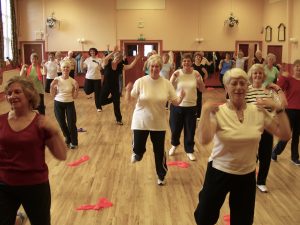Everybody can improve their balance, no matter what their starting point or their age.
Generally, it takes only 35 days of constant practice (5-6 times a week) to realise that you’ve already improved, for yourself.
Care should be taken to ensure that your surrounding area is free of potential hazards and if a supporting chair is being used, that it is completely stable.
If you are taking any medications that affect the inner ear, you should first check with your doctor.
Factors affecting balance are:
– Poor sleep – so try your routine early in the day, not last thing at night. Did you know your ability to balance can go down by 40% after a bad night’s sleep ?
– Certain medications – especially for cholesterol or blood pressure.
– A change of medication: it can take a couple of weeks for the body to acclimatise.
Did you know that loss of good balance is fast ? A few weeks indoors, or perhaps a lengthy illness, will mean your balance has deteriorated but as already stated, consistent practice most days will improve it quickly too.
Equipment:
You only need your body weight and maybe a chair/bench and a broom handle to get started:
– If possible, perform these barefoot.
– Move slowly and smoothly.
– Do not worry if you find the ‘straightening up’ movement more wobbly – this is normal.
– Equally if you wobble on one of your attempts but manage to steady yourself – that is also quite normal.
Making it ‘look easy’ takes practice. Top gymnasts practice balance.
Progressions/ number of repetitions:
– Start with 3 times on each leg, repeat 4 times to make a total of 12 on each leg.
– After 2 or 3 weeks, try 4 on each leg.
– For improvers, you are attempting 5 on each leg repeated twice – total of 10. You are aiming to do eventually do 10 on each leg, in one attempt.
YouTube links:
Basic Balance:
An extremely safe start for anybody no matter how ‘wobbly’ you might feel. Practice daily preferably as soon as you’re awake. 3 – 4 weeks should see improvement & confidence.
Balance – essential start:
The basics to build better balance. Takes 2 to 3 weeks – mostly daily.
 Every Tuesday 10 – 11am.
Every Tuesday 10 – 11am.